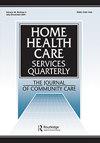O17.4 First clinical evaluation of a 30-minute point-of-care-test for Chlamydia trachomatis and Neisseria gonorrhoeae infection in UK sexual health clinics
IF 0.9
Q4 HEALTH POLICY & SERVICES
引用次数: 1
Abstract
Background As part of a programme of work seeking to facilitate adoption of multi-STI POCTs in English sexual health services (SHS), we implemented an approach to facilitate adoption of the binx health io CT/NG Assay (‘binx POCT’). This included supporting analysis and interpretation of data following clinical validation and routine use of the binx POCT as implemented into clinical care, prior to SHS adoption decisions. Methods Binx POCT diagnostic accuracy was compared to locally-used laboratory-based nucleic acid amplification tests (NAATs) and expressed as positive (PPA) and negative percentage agreement (NPA), with 95% confidence intervals (95% CI). Individual SHS reported turnaround time (TAT) from sample collection to patient receipt of results, before and after binx POCT implementation. Results Three SHS participated, and were a mix of high, medium and low-throughput in south England. Of N=417 patients across all services, n=396 (195 women and 201 men) were successfully tested with both the binx POCT and SHS routine NAATs. CT: male PPA 92.5% (79.6–98.4), NPA 99.4% (96.6–100.0); female PPA 82.1% (63.1–94.0), NPA 98.2 (94.8–99.6). NG: male PPA 91.7% (61.5–99.8), NPA 100% (98.1–100.0); female PPA 90.9% (58.7–99.8), NPA 100% (2.0–100.0). Median TAT decreased from 5 days (IQR 3–7.25) pre-implementation, to 1 day (1=same-day (IQR 1–2)) during implementation; p Conclusion Binx POCT PPA and NPA, as compared to participating SHS routine NAATs, were largely within expected ranges of the diagnostic evaluation conducted in the United States for FDA approval, and there was significant decrease in TAT time across all services. The binx POCT was not available for purchase directly following the programme’s end, however, local data gave confidence to SHS to use the test in routine care, and all indicated interest in adoption. Providing services the ability to test new POCTs in local settings prior to purchase could help facilitate their wider implementation.O17.4在英国性健康诊所对沙眼衣原体和淋病奈瑟菌感染进行30分钟即时检测的首次临床评估
背景:作为促进在英国性健康服务(SHS)中采用多重性传播疾病POCT的工作计划的一部分,我们实施了一种促进采用binx健康CT/NG检测(“binx POCT”)的方法。这包括对临床验证后的数据进行支持分析和解释,并在决定采用SHS之前将binx POCT常规应用于临床护理。方法将Binx POCT诊断准确性与当地使用的实验室核酸扩增试验(NAATs)进行比较,并以阳性(PPA)和阴性百分比一致性(NPA)表示,95%置信区间(95% CI)。每个SHS报告从样本采集到患者收到结果的周转时间(TAT),在binx POCT实施之前和之后。结果3个SHS参与,在英格兰南部是高、中、低通量混合。在所有服务机构的N=417例患者中,N= 396例(195名女性和201名男性)成功地接受了binx POCT和SHS常规NAATs检测。CT:男性PPA 92.5% (79.6 - -98.4), NPA 99.4% (96.6 - -100.0);女性PPA 82.1% (63.1 ~ 94.0), NPA 98.2(94.8 ~ 99.6)。NG:男性PPA 91.7% (61.5 ~ 99.8), NPA 100% (98.1 ~ 100.0);女性PPA 90.9% (58.7 ~ 99.8), NPA 100%(2.0 ~ 100.0)。中位TAT从实施前的5天(IQR 3-7.25)减少到实施期间的1天(1=同一天(IQR 1 - 2));p结论:与参与SHS的常规naat相比,Binx POCT的PPA和NPA在美国进行的FDA批准的诊断评估的预期范围内,并且所有服务的TAT时间显着减少。在项目结束后,binx POCT不能直接购买,然而,当地的数据给了SHS在日常护理中使用该测试的信心,并且所有人都表示有兴趣采用该测试。为服务部门提供在购买之前在当地环境中测试新的poct的能力,有助于促进其更广泛的实施。
本文章由计算机程序翻译,如有差异,请以英文原文为准。
求助全文
约1分钟内获得全文
求助全文
来源期刊

HOME HEALTH CARE SERVICES QUARTERLY
HEALTH POLICY & SERVICES-
CiteScore
2.40
自引率
0.00%
发文量
18
期刊介绍:
Home Health Care Services Quarterly continues to publish important research on the cutting edge of home care and alternatives to long-term institutional care for the elderly, disabled, and other population groups that use in-home health care and other community services. The journal is aimed toward service providers and health care specialists involved with health care financing, evaluation of services, organization of services, and public policy issues.
 求助内容:
求助内容: 应助结果提醒方式:
应助结果提醒方式:


